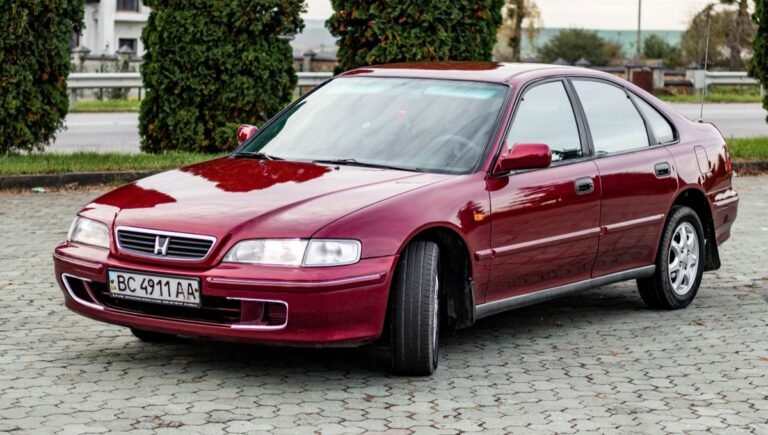Can You Make a Front Wheel Drive Car AWD? Ultimate Guide
Yes, a front wheel drive car can be converted to AWD by adding a rear differential. This modification enhances traction and handling in various driving conditions.
Converting a front-wheel-drive vehicle to all-wheel drive involves installing additional components such as a driveshaft and differential to power the rear wheels. The process requires advanced mechanical knowledge and expertise to ensure proper functionality and safety. By transforming a front-wheel-drive car into an all-wheel-drive system, drivers can experience improved performance and stability on different road surfaces.
This alteration may also increase the overall value and versatility of the vehicle, offering a unique driving experience for enthusiasts and automotive enthusiasts alike.
The Basics Of Drivetrain Systems
When it comes to understanding the drivetrain systems of vehicles, it’s essential to grasp the differences between front-wheel drive (FWD), rear-wheel drive (RWD), and all-wheel drive (AWD) configurations. Each system has its own unique characteristics and capabilities, which play a crucial role in a vehicle’s performance and handling.

Differences Between Fwd, Rwd, And Awd
Let’s break down the fundamental distinctions between FWD, RWD, and AWD drivetrain systems:
- FWD: Power is transmitted to the front wheels, providing efficient traction and stability in various driving conditions.
- RWD: Rear-wheel drive delivers power to the rear wheels, offering a balance of handling and responsiveness, especially in performance-oriented vehicles.
- AWD: All-wheel drive systems distribute power to all four wheels, enhancing traction and control on different terrains and in adverse weather conditions.
Components Of Awd Systems
AWD systems consist of several key components that work together to deliver power to all four wheels:
- Transfer Case: Distributes power from the transmission to the front and rear axles.
- Front and Rear Differentials: Manage the distribution of power between the wheels on the same axle.
- Drive Shafts: Transmit power from the transmission to the front and rear axles.
- Electronic Control Unit (ECU): Regulates power distribution based on traction and driving conditions.
The Front Wheel Drive Layout
The Front Wheel Drive (FWD) layout is a popular configuration in modern automobiles, where the engine’s power is transmitted to the front wheels. This design is known for its efficiency, simplicity, and cost-effectiveness, making it a common choice for many vehicles.

Pros And Cons Of Fwd Vehicles
- Good traction in slippery conditions
- Efficient use of interior space
- Lower production cost
- Potential for understeer
- Complex steering and suspension setup
- Less balanced weight distribution
Understanding Fwd Mechanics
In a front-wheel-drive vehicle, the engine’s power is sent to the front wheels, which are responsible for both steering and propulsion. This layout allows for better traction in slippery conditions and also provides more interior space due to the absence of a driveshaft to the rear wheels.
Why Convert Fwd To Awd?
Converting a front-wheel drive (FWD) car to all-wheel drive (AWD) is possible, but it requires significant modifications to the vehicle’s drivetrain. By adding an additional axle and differential, power can be distributed to all four wheels, improving traction and handling in various road conditions.
Enhanced Traction And Performance
If you are looking to upgrade your front-wheel-drive (FWD) car, converting it to an all-wheel-drive (AWD) system might be a great option. One of the primary reasons to convert FWD to AWD is enhanced traction and performance. AWD systems distribute power to all four wheels, providing better stability and grip on the road. This makes it easier to accelerate, brake, and turn, especially on slippery surfaces.
Weather And Terrain Adaptability
Another reason to convert FWD to AWD is weather and terrain adaptability. AWD systems provide better control and handling on rough roads, such as gravel or dirt, as well as in snowy or wet conditions. The added traction and stability provided by an AWD system can help you maintain control of your vehicle, even in challenging weather conditions. With an AWD system, you can confidently tackle any type of terrain or weather condition that comes your way.
In conclusion, converting your FWD car to an AWD system can provide a range of benefits, from enhanced traction and performance to better adaptability to different weather and terrain conditions. If you are looking to upgrade your vehicle, consider the benefits of an AWD system and how it can improve your driving experience.
Feasibility Of Fwd To Awd Conversion
Convert your front-wheel drive car to all-wheel drive with the feasibility of FWD to AWD conversion. Enhance traction and control with this modification, making your vehicle more versatile and adaptable to various road conditions. Experience the benefits of AWD without the need to purchase a new car.
Technical Challenges
Converting a front-wheel drive (FWD) car to all-wheel drive (AWD) may seem like an enticing idea, but it comes with its fair share of technical challenges. One of the primary challenges is the difference in drivetrain systems between FWD and AWD vehicles.
FWD cars typically have a transversely mounted engine, where the engine’s crankshaft is aligned parallel to the front axle. This setup allows power to be delivered to the front wheels only. On the other hand, AWD cars have a more complex drivetrain system that distributes power to all four wheels.
To convert a FWD car to AWD, several modifications are necessary. One of the major technical challenges is retrofitting the drivetrain to accommodate the additional components required for AWD functionality. This includes adding a transfer case, differentials, driveshafts, and modifying the suspension system to handle the increased weight and torque distribution.
Cost Implications
Undertaking a FWD to AWD conversion also comes with significant cost implications. The process involves sourcing and purchasing the necessary AWD components, which can be quite expensive. Additionally, the labor costs for the conversion can be substantial, as it requires skilled technicians with expertise in modifying drivetrain systems.
Furthermore, the conversion process may also require modifications to the car’s chassis and body structure to accommodate the added components. This can involve significant structural changes, which can further increase the overall cost of the conversion.
It’s important to consider the cost implications of a FWD to AWD conversion and weigh them against the potential benefits before deciding to undertake such a project.
Required Components For Awd Conversion
Converting a front-wheel drive car to an all-wheel drive (AWD) vehicle can be an exciting project for car enthusiasts and those looking to enhance their car’s performance. However, it’s important to understand the necessary components for a successful AWD conversion. In this article, we will explore the key elements required to transform a front-wheel drive car into an AWD machine.

Transfer Case And Differential
The transfer case and differential are vital components in an AWD conversion. The transfer case is responsible for distributing power between the front and rear axles, ensuring an equal power distribution for improved traction. The differential, on the other hand, allows the wheels on the same axle to rotate at different speeds while maintaining power transfer.
When converting a front-wheel drive car to AWD, a transfer case and differential compatible with the specific vehicle model need to be sourced. These components must be carefully selected to ensure a seamless integration with the existing drivetrain, enabling efficient power distribution to all four wheels.
Axles And Driveshafts
Axles and driveshafts play a crucial role in transmitting power from the transmission to the wheels. In an AWD conversion, additional axles and driveshafts are required to connect the front and rear wheels. These components must be strong enough to withstand the increased torque and power demands associated with AWD.
The axles and driveshafts chosen for the conversion should be designed to fit the specific vehicle model and accommodate the necessary modifications. It is essential to ensure proper alignment and sizing of these components to maintain optimal drivetrain performance and reliability.
Awd Transmission
The transmission is another critical component in an AWD conversion. An AWD transmission is designed to transfer power to both the front and rear wheels, enabling all-wheel drive capabilities. This type of transmission typically includes additional gears and components to facilitate power distribution.
When converting a front-wheel drive car to AWD, it is necessary to replace the existing transmission with an AWD-compatible one. This ensures that power is efficiently distributed to all four wheels, enhancing traction and overall performance.
By considering the required components for an AWD conversion, car enthusiasts can embark on a successful project to transform their front-wheel drive car into an all-wheel drive machine. From the transfer case and differential to axles, driveshafts, and the AWD transmission, each component plays a crucial role in achieving optimal performance and traction on all four wheels.
Step-by-step Conversion Process
Initial Assessment And Planning
Before embarking on the conversion of a front-wheel-drive car to AWD, it’s crucial to conduct a comprehensive initial assessment. This involves evaluating the vehicle’s existing components, identifying suitable AWD components, and developing a detailed plan for the conversion process. The assessment ensures that the conversion is feasible and aligns with the specific requirements of the vehicle.
Installation Of Awd Components
The installation phase involves the meticulous fitting of AWD components to the front-wheel-drive vehicle. This includes adding a rear differential, driveshaft, and necessary suspension modifications. The installation process demands precision and expertise to ensure seamless integration of the new AWD system with the existing framework of the vehicle.
Integration With Vehicle Systems
Once the AWD components are installed, the next crucial step is integrating them with the vehicle’s systems. This includes connecting the AWD system to the engine, transmission, and other relevant components. The integration process requires careful calibration and testing to ensure optimal functionality and performance of the AWD system.
Potential Pitfalls And How To Avoid Them
Converting a front-wheel-drive car to all-wheel-drive (AWD) is possible, but it can come with potential pitfalls. It requires significant modifications that can be complex and expensive. It’s essential to consult with a professional mechanic and thoroughly research the process before attempting it.

Potential Pitfalls and How to Avoid Them
Sourcing Reliable Parts
When modifying a front-wheel-drive car to all-wheel drive (AWD), ensure genuine parts for reliability.
Verify parts compatibility and quality to prevent performance issues.
Ensuring Proper Alignment and Fit
Correct alignment and fit are crucial for optimal AWD conversion.
Seek professional assistance for precise installation and alignment.
Electrical and Software Modifications
Modify electrical systems and software for seamless integration.
Consult experts to avoid electrical malfunctions and software glitches.
Case Studies And Successful Conversions
Transforming a front-wheel-drive car into an all-wheel-drive (AWD) vehicle has been a subject of great interest. Case studies have demonstrated successful conversions through innovative engineering solutions, resulting in enhanced performance and traction. These conversions offer valuable insights into the feasibility and benefits of AWD modifications for front-wheel-drive vehicles.
Real-life Conversion Examples
Performance Outcomes And Reviews
In the realm of automotive modifications, the conversion of a front-wheel-drive car to an all-wheel-drive system has garnered significant interest. Many enthusiasts have taken on this challenge, resulting in some notable case studies and successful conversions.
Real-life Conversion Examples
– Honda Civic: A popular choice for AWD conversions due to its front-wheel-drive platform.
– Subaru Impreza: Known for successful conversions, enhancing traction and performance.
– Mitsubishi Lancer: Converted to AWD for improved handling and stability.
Performance Outcomes And Reviews
– Owners report enhanced acceleration and cornering capabilities.
– Improved off-the-line traction and stability in various driving conditions.
– Positive feedback on handling, especially in challenging terrains.
Legal And Safety Considerations
Yes, it’s possible to convert a front-wheel-drive car to all-wheel drive, but it involves significant legal and safety considerations. The modification may affect the vehicle’s handling and performance, potentially impacting safety. It’s crucial to comply with local laws and regulations and ensure the proper installation by a certified professional.
Compliance With Vehicle Regulations
Converting a front-wheel-drive car to all-wheel drive involves modifications that must comply with local vehicle regulations.
Impact On Insurance And Warranty
Switching to AWD can affect insurance rates and might void the manufacturer’s warranty.
Maintenance And Longevity Of Converted Awd Cars

Regular maintenance ensures AWD system functions efficiently.
- Inspect tire pressure and tread depth monthly.
- Change transfer case oil every 30,000 miles.
- Check CV joints for wear and tear bi-annually.
Addressing common issues promptly extends vehicle lifespan.
- Vibration during acceleration may indicate worn CV joints.
- Leaking fluid could point to a failing differential.
- Unusual noises might signal a problem with the transfer case.
Is Awd Conversion Worth It?
Is AWD conversion worth it? That’s the burning question many front-wheel drive (FWD) car owners ponder. Converting a FWD car to all-wheel drive (AWD) can bring significant benefits, but it comes with its own set of costs and considerations.
Balancing Costs Vs. Benefits
When considering an AWD conversion, it’s crucial to weigh the costs against the benefits. The conversion process involves adding components such as a rear differential, driveshaft, and other AWD-specific parts. While the enhanced traction and stability of AWD can be invaluable, the financial investment for the conversion should be carefully evaluated. It’s essential to consider the overall cost and potential long-term benefits before proceeding with the conversion.
Personalization Vs. Factory Settings
One of the key decisions in an AWD conversion is whether to opt for a personalized aftermarket setup or stick with factory settings. While a personalized conversion allows for customization to suit specific driving needs, it can be more complex and costly. On the other hand, utilizing factory components may provide a more straightforward and potentially more reliable solution. Balancing the desire for personalization with the advantages of factory components is crucial in making an informed decision.
Conclusion
Converting a front-wheel-drive car to an all-wheel-drive system is possible, but it requires a significant investment of time, money, and effort. The process involves installing additional components and modifying the existing ones to handle the power split between the front and rear wheels.
It is crucial to consult with a professional mechanic and ensure that the conversion is done correctly to avoid safety issues and potential damage to the vehicle. With proper planning and execution, the conversion can result in improved performance, traction, and handling, making it a worthwhile investment for some car enthusiasts.

Wheelsstuds is your one-stop online destination for everything from the world of mobility – cars, motorcycles, scooters, aviation, railways, and metro.





